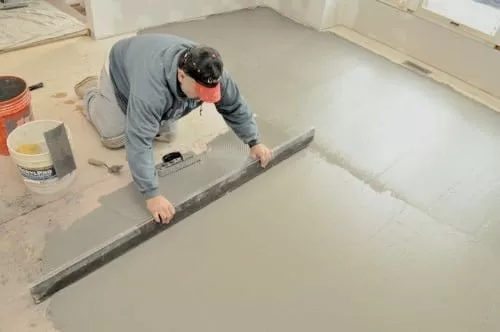Understanding Levelling
Whenever we install new flooring, we want it to look perfect and level as if it was always a part of the house. However, due to uneven subfloors, there can be a lot of challenges. That’s where the floor levelling comes into play. As a timber flooring business, we understand that our customers might have many questions about the process of floor levelling. In this blog post, we will cover all the necessary information you need to know about floor levelling.
What Is Floor Levelling & Why Is It Necessary?
Floor levelling involves creating a flat and smooth sub-floor surface. Uneven sub-floors lead to poorly installed timber floors that look unsightly and are uncomfortable to walk on. Therefore, experienced professionals ensure the sub-floor is levelled before installing timber flooring. Most houses, whether they are brand new or existing, need to have their subfloors levelled before installation. Levelling is a common practice in the construction and flooring industry, accomplished through various methods such as sanding, grinding, and self-levelling compounds.
Different Methods of Levelling
The choice of levelling method depends on the type of subfloor, whether it’s concrete or wooden.
In Australia, several techniques are widely employed to achieve a levelled surface. Let’s explore these methods in detail:
Sanding and grinding: are ideal for uneven concrete or wooden subfloors. This method grinds down the highest point of the floor making it even. It’s a great solution for small areas that need levelling. Sanding and grinding is also used to remove any existing coatings, adhesives or paint from the subfloor.
Screeding: is a more traditional method of levelling subfloors. This method involves laying a thin layer of screed, which is a mixture of sand and cement, onto the subfloor. The screed is then levelled and smoothed to create a flat surface. This method is suitable for both wooden and concrete subfloors and can be used to create a level surface or a slight slope, depending on the desired finish.
Self-levelling compounds: are perfect for floors with a considerable degree of unevenness. This method includes using a cement-based compound that smooths out any lumps and bumps in the subfloor. Depending on the subfloor condition, we can choose between two types of self-levelling compounds: latex or cement-based compounds. Latex is used when the subfloor is wooden due to it’s elastic nature that can accommodate for potential future movements of the subfloor and cement is more suited for concrete subfloors. Self-levelling compounds are excellent for filling in dips, cracks, and other imperfections in the subfloor. They also dry quickly, which allows for timber flooring installation to begin within a day or two.
Conclusion
A levelled floor is key to a successful timber flooring installation. The process can be complex, but by assessing the existing floor, choosing the right levelling solution, hiring a professional, preparing the site, and trusting the process, the end result will be a durable and long-lasting flooring. We hope this guide has given you the confidence to embark on a successful flooring project. At Arta floor we can ensure that your new flooring is installed on a level, stable surface that will last for years to come. So, contact us today and let us help you create the perfect base for your beautiful new floors!

